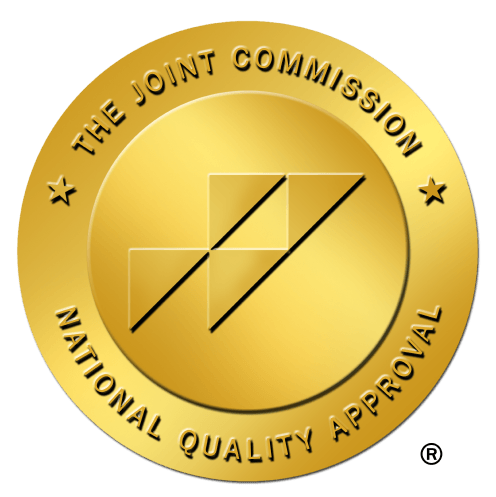Understanding How Methamphetamine Addiction Develops Over Time


Learn how does methamphetamine addiction develop, from initial use to dependence. Understand the stages, signs, and long-term impact of meth addiction over time
Methamphetamine use has surged in the recent years, devastating individuals, families, and entire communities. Whether you're worried about your own use or concerned for someone you love, understanding the progression of addiction is critical. So, how does methamphetamine addiction develop—and why is it so difficult to stop once it starts?
At The Forge Recovery Center, we help individuals navigate the complex journey of addiction and mental health recovery with personalized care and support. In this article, we will explore how meth addiction forms over time, its warning signs, and why early intervention can make all the difference.
What Is Methamphetamine?

Methamphetamine is a powerful central nervous system stimulant that significantly affects the brain. Known for its intense and immediate euphoric effects, meth has a high potential for addiction—even after just a few uses. It rapidly increases dopamine levels, reinforcing the brain's reward system and making users crave repeated exposure.
Forms and Street Names
Illicit methamphetamine is often found as a white powder, pill, or crystalline form. The most common version on the street is “crystal meth,” a glass-like shard that can be smoked. Other street names include “ice,” “Tina,” “crank,” and “glass.” These terms often vary by region and subculture.
Legal Vs. Illegal Use
Legally, methamphetamine is prescribed in rare cases under the brand name Desoxyn to treat ADHD and obesity. However, its medical use is tightly controlled due to its addictive potential. The majority of meth use in the U.S. is illegal, produced in unregulated labs and often cut with toxic substances.
According to the National Institute on Drug Abuse (NIDA), illicit methamphetamine is far more potent and dangerous than its prescription counterpart. Chronic use can lead to severe mental health issues, physical deterioration, and profound changes in brain function. Understanding what meth is—and the different forms it can take—is the first step in recognizing the risks and helping someone seek timely support.
The Neurobiology of Meth Addiction

Methamphetamine addiction isn’t just behavioral—it’s deeply rooted in brain chemistry. Understanding what meth does to the brain helps explain why quitting is so difficult without professional help.
Dopamine Flooding
Meth causes a massive release of dopamine, the brain’s "feel-good" chemical. This surge creates a powerful rush of euphoria, far more intense than what’s experienced through natural rewards like food or social interaction. The brain quickly begins to associate meth with pleasure and motivation, reinforcing repeated use.
Hijacking the Brain’s Reward System
Meth specifically targets the mesolimbic dopamine system—often referred to as the brain’s reward circuit. This system plays a central role in motivation, pleasure, and learning. Over time, meth rewires this system, making drug-seeking behavior a top priority over basic survival needs like eating or sleeping.
Neuroplastic Changes and Damage
Chronic meth use alters brain structure and function, particularly in areas that control emotion, memory, and decision-making. This damage isn't always reversible. Long-term users often show reduced gray matter, impaired cognitive function, and emotional dysregulation—even after months of abstinence.
At The Forge Recovery Center, we understand that addiction is more than willpower—it’s a neurological disorder. That’s why we build treatment plans that go beyond detox, helping you or your loved one heal both physically and mentally.
Are You Struggling with Mental Health or Addiction?
We Can Help. Call Us Now!
CALL: 877-839-1772
Stages of Methamphetamine Addiction
Methamphetamine addiction doesn’t happen all at once—it unfolds in stages. Each phase pulls the user deeper into dependency, making it harder to stop without intervention. Recognizing these stages can help you or someone you care about take action before the addiction becomes overwhelming.
1. Initiation
Addiction often starts with casual or experimental use. This might be triggered by curiosity, social influence, or the desire to escape emotional pain. The initial high—a rush of energy, confidence, and euphoria—can make meth seem harmless at first.
2. Binge and Crash Cycle
As use continues, many individuals fall into a binge-crash pattern. During a binge, meth is taken repeatedly over several hours or even days to maintain the high. This is followed by a crash—a period of intense fatigue, depression, and irritability. The crash can feel unbearable, leading the user to seek the drug again for relief.
3. Tolerance Development
Over time, the body adapts to meth, requiring larger and more frequent doses to feel the same effects. This tolerance is dangerous—it pushes users toward riskier consumption patterns, increasing the chance of overdose and long-term damage.
4. Dependence and Withdrawal
At this point, stopping use leads to withdrawal symptoms like anxiety, depression, insomnia, intense cravings, and even suicidal thoughts. The user is no longer taking meth to get high—they’re using it just to feel normal or avoid the crash.
5. Addiction
Meth addiction is marked by compulsive use, even when it leads to serious consequences—lost jobs, damaged relationships, legal trouble, and declining health. This is when meth use meets the clinical criteria for a substance use disorder.
At The Forge Recovery Center, we meet clients wherever they are in this cycle. Whether you’re in the early stages or struggling with full-blown addiction, our personalized treatment plans are designed to help you take back control—one step at a time.
Physical and Psychological Effects of Long-Term Meth Use
Long-term methamphetamine use can devastate both the body and mind. While the initial high may feel empowering, prolonged use leads to serious health issues and life disruptions that are often difficult to reverse without professional help.
Physical Health
Chronic meth use takes a visible toll on the body. One of the most notorious effects is "meth mouth"—severe tooth decay, gum disease, and tooth loss caused by dry mouth, poor hygiene, and teeth grinding. Users may also develop open sores from obsessive skin picking, as well as significant weight loss due to appetite suppression. Over time, meth damages the heart, liver, and kidneys, raising the risk of stroke and organ failure.
Mental Health
Meth profoundly impacts mental well-being. Long-term users often experience anxiety, paranoia, and aggression. Hallucinations and delusions are also common, sometimes leading to psychotic episodes that mimic schizophrenia. These psychological effects don’t always go away after stopping the drug—some persist for months or even years, especially without treatment.
Social Consequences
Addiction doesn’t just affect the individual—it spreads chaos into every part of their life. Many users lose jobs, drop out of school, or face legal problems due to erratic behavior and poor decision-making. Relationships with family and friends often break down as trust erodes and priorities shift toward obtaining and using the drug.
At The Forge Recovery Center, we understand that the damage goes beyond the drug itself. Our team is here to help you or your loved one rebuild—physically, emotionally, and socially—with comprehensive care designed for lasting recovery.
Are You Struggling with Mental Health or Addiction?
We Can Help. Call Us Now!
CALL: 877-839-1772
Co-Occurring Disorders and Dual Diagnosis
Methamphetamine addiction rarely exists in isolation. Many individuals struggling with meth use also face underlying or resulting mental health disorders—a combination known as a dual diagnosis. Ignoring one while treating the other often leads to relapse and continued suffering.
Mental Health Disorders
Long-term meth use is closely linked with a high rate of co-occurring mental health issues. Depression, anxiety, and psychosis are especially common. Some individuals may have used meth as a form of self-medication, while others develop these conditions as a direct consequence of prolonged use. For example, meth can trigger severe paranoia or hallucinations that persist even during periods of sobriety. Untreated, these conditions can make recovery feel impossible.
Importance of Integrated Treatment
Treating addiction without addressing mental health—or vice versa—is like patching a leak without turning off the water. Effective recovery requires an integrated approach that tackles both sides of the problem at the same time. This includes personalized therapy, psychiatric support, and tools for emotional regulation.
At The Forge Recovery Center, we specialize in dual diagnosis treatment. We don’t just focus on getting you off meth—we help you understand the emotional drivers behind your addiction and support you in managing them. True recovery begins when both the body and mind are treated together.
Treatment and Recovery Options

Recovering from methamphetamine addiction is possible—but it requires more than just willpower. Because of the drug’s profound impact on both the brain and body, effective treatment must be comprehensive, compassionate, and tailored to the individual.
Detoxification
The first step in recovery is detox—safely removing meth from the body while managing the physical and psychological withdrawal symptoms. These symptoms can include intense fatigue, depression, anxiety, and powerful cravings. At The Forge Recovery Center, detox is conducted under medical supervision to ensure safety and comfort during this critical phase.
Behavioral Therapies
Once stabilized, the core of meth addiction treatment lies in therapy. Cognitive-behavioral therapy (CBT) helps individuals identify and change destructive thought patterns that drive their addiction. Contingency management, a proven approach for meth addiction, uses rewards to reinforce sobriety and positive behaviors. Both methods empower individuals to rebuild control over their lives.
Support Systems
Recovery doesn’t happen in isolation. Strong support systems—family involvement, peer support groups, and professional counseling—play a critical role in maintaining long-term sobriety. Aftercare programs and sober living environments help individuals transition back into daily life while staying connected to recovery resources.
Personalized Treatment Plans
No two recovery journeys are the same. That’s why The Forge Recovery Center emphasizes personalized care. We work with each client to create a treatment plan that fits their unique needs, challenges, and goals—addressing not just addiction, but any co-occurring mental health issues as well.
If you or a loved one is struggling with meth use, know that help is available—and recovery is absolutely within reach.
Are You Struggling with Mental Health or Addiction?
We Can Help. Call Us Now!
CALL: 877-839-1772
Meth Addiction Taking Over Your Life? We’ll Help You Take It Back
Methamphetamine addiction doesn’t happen overnight—and neither does recovery. But with the right support, healing is possible. If you or someone you love is caught in the cycle of meth use, The Forge Recovery Center is here to help. Our personalized treatment plans address both the physical grip of addiction and the underlying mental health challenges that often accompany it. You don’t have to do this alone. Reach out today and take the first step toward a healthier, addiction-free future.
Are You Struggling with Mental Health or Addiction?
We Can Help. Call Us Now!
CALL: 877-839-1772





